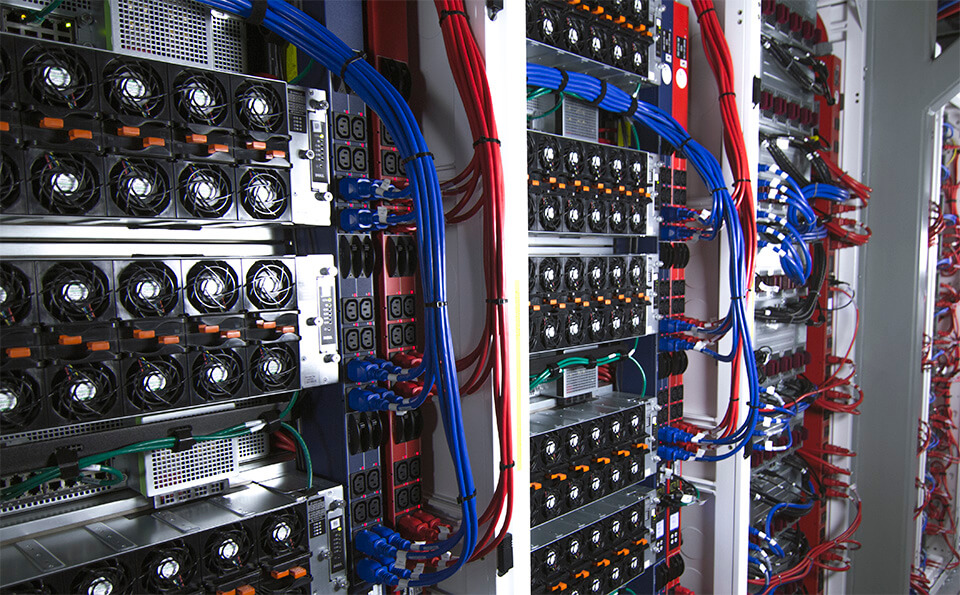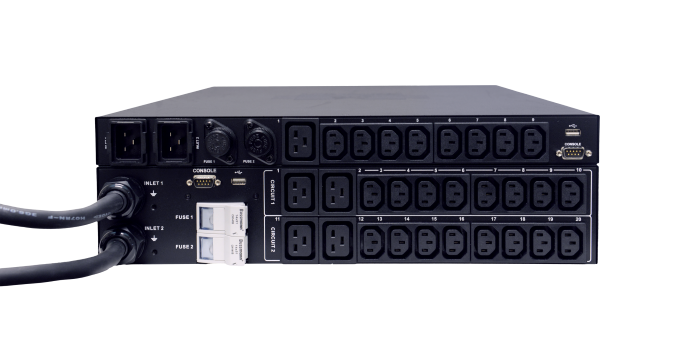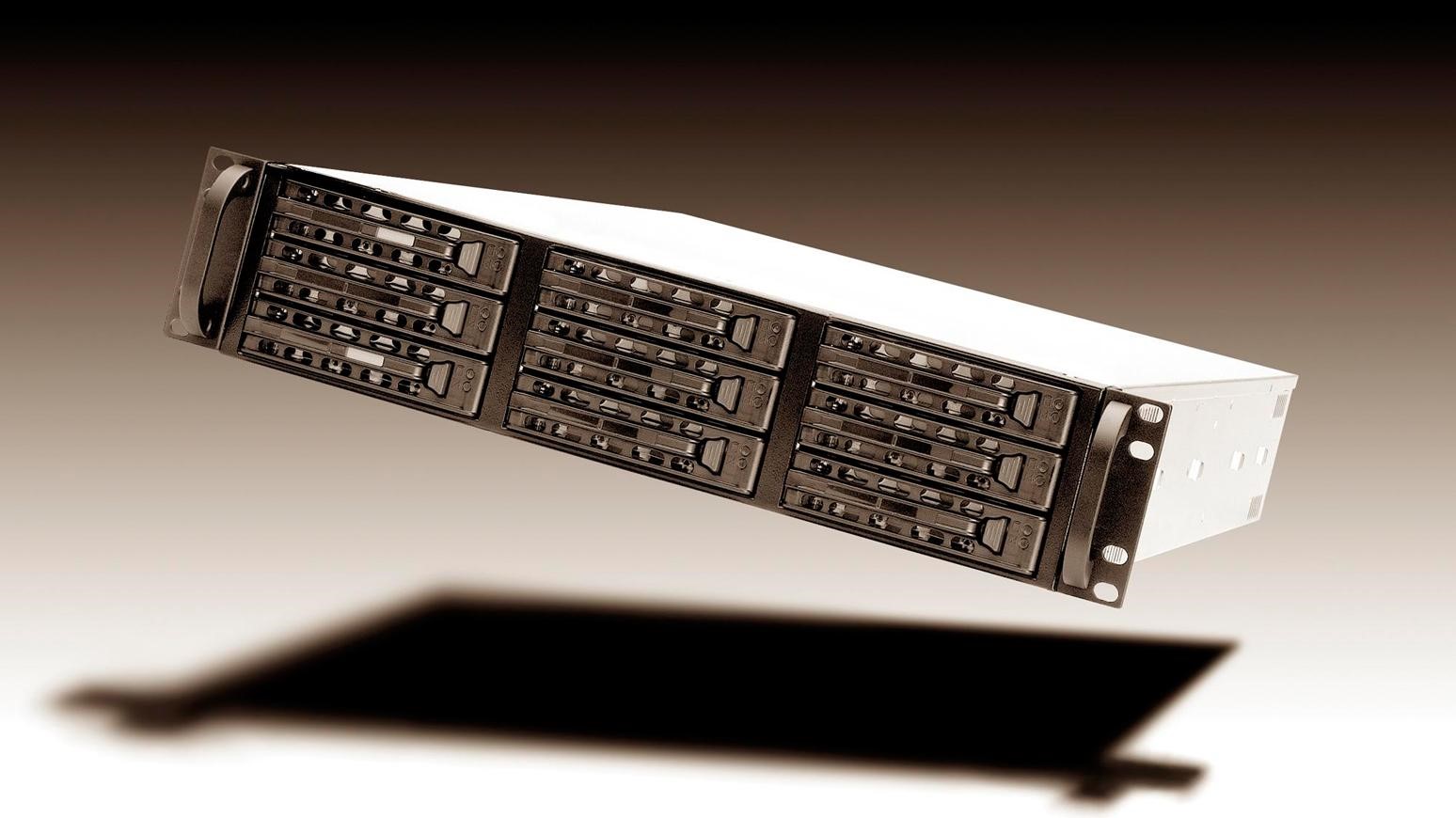The Raritan Blog
Home » Raritan Blog
Data Center Cabinet Load Balancing: there’s a less complicated way.
Scott Fier
March 28, 2017

Why do we load balance?
Without going into the complicated math, suffice it to say that load balancing in a 3 phase system is desirable. The more unbalanced a system the more problems it creates. UPS life, for one, can be affected by unbalanced systems. Although one circuit (server cabinet) being out of balance won’t have much effect, if many or all circuits on a panel are out of balance, the main circuit supplying the breaker panel will be out of balance and this can ruin your upstream UPS. There are also efficiency issues with unbalanced loads.
How is load balancing currently accomplished in a rack cabinet?
To balance a load in a cabinet, the loads of the equipment power supplies are spread across the 3 phases – L1/L2, L2/L3, L3/L1. This is done by plugging the first server (or switch/router) in an outlet wired on L1/L2, the next server on L2/L3, the next on L3/L1, then start over. The goal is to get an equal number of devices/loads on all 3 phases – or as close as possible.
This approach can quickly turn into a cabling nightmare. Most rack PDUs are linear in their phase layout of outlets – there are only three banks of outlets, one for each phase. For example, on a 36 outlet PDU, outlets 1 through 12 will be on L1/L2, 13 through 24 on L2/L3, and 25 through 36 on L3/L1. If you use the above method of balancing, and start racking the devices at the bottom U position, the third device you plug in will need to reach the top third of the PDU and the last device may have to reach back to the bottom of the PDU. In other words, a lot of crisscrossed cabling.
How do Raritan’s balance the cable and load balancing challenge?
In certain Raritan PX three-phase models the architecture gets around the cabling issue by staggering the grouping of outlets - there are at least 6 banks of outlets. For example, outlets 1 through 6 are on L1/L2, 7 through 12 on L2/L3, 13 through 18 on L3/L1, but then we start over at L1/L2 for outlets 19 through 24. (See Illustration below)
This intelligently engineered architecture results in more reliability and easier execution. The devices towards the top of the cabinet don’t need to be plugged in to the bottom of the PDU and devices at the bottom don’t need to be plugged in to the top.
New Two Minute PX Rack PDU Video
Michael Bord
August 15, 2016
What sets the PX series of intelligent PDUs apart from other power strips? Greater value. And that goes beyond reliable power distribution. It's about improving uptime and capacity management. Saving energy and reducing your carbon footprint. Managing geographically dispersed infrastructure that needs to be more reliable than ever before. In short, it's about meeting the challenges you face in your everyday life head-on, with solutions that are engineered with you in mind. Watch this new clip to see exactly what we mean.
Introducing Raritan, a Brand of Legrand
Michael Bord
March 10, 2016

This month we are thrilled to introduce Raritan’s new logo. Raritan Inc. is now Raritan, a Brand of Legrand. On the surface, it would appear to be nothing more than semantics and a sleek new modern design. But, there’s more to the story than that.
Understanding Overload Protection in Raritan’s Rack Transfer Switch
David Wood
February 16, 2016

This past week, we opened our mailbag and found the following customer email:
Dear Raritan team,
We mostly love the 16A rated rack transfer switch so far! The physical design made it easy to connect power feeds from the back of the cabinet. The outlet-level metering and switching let us power off development servers no one was using on weeknights and weekends. But, here’s one thing that wasn’t so great:
We recently experienced a total device failure. We weren’t sure what it was at first, but quickly realized it was a blown fuse from both the web interface and indicator lamp/alarm on the unit. Once we replaced the fuse the unit continued operating just fine. But, why is it there in the first place? And why not have a circuit breaker instead of a fuse?
Tl;dr What is the purpose of the fuses located on the inlet side of Raritan’s rack transfer switch and why not have a circuit breaker instead?
KVM Switches, Embedded Processors & Software Solutions All Have Their Place
Michael Bord
January 4, 2016

Originally Published in Processor.com on April 27, 2015
IT managers have a lot on their plates when it comes to managing servers both in-house and remotely, especially if they work in environments where they need access to multiple systems regardless of whether they are onsite or at a separate location. Fortunately, there are plenty of solutions to consider for remote server management that is unique from one another but can also be used together in certain situations to cover all of your bases.
Subscribe
Upcoming Events
- Advancing Data Center Construction West 2024
- May 6 – 8 • Salt Lake City, UT
- Net Zero Data Center
- May 16 – 17 • Dallas, TX
- 7x24 Exchange Spring
- June 9th • JW Marriott Orlando Grande Lakes
Latest Raritan News
- Legrand Certifications and Process Controls Provide Confidence in Information Security for Network-Connected Devices in Data-Related Applications
- Posted on April 1, 2024
- Legrand Releases Version 4.0 of Raritan’s Industry-Leading Secure KVM Switches, Raising Bar for Secure Desktop Access
- Posted on July 31, 2023
- Legrand Revitalizes Data Center Sector with Two Revolutionary Intelligent Rack PDUs
- Posted on May 1, 2023
- Raritan Reveals The MasterConsole® Digital Dual KVM Switch
- Posted on February 18, 2021
- Legrand Data, Power and Control Division Announced as Finalist in Six Categories at DCS Awards 2020
- Posted on November 9, 2020